-
 Bitcoin
Bitcoin $118900
1.66% -
 Ethereum
Ethereum $3735
1.35% -
 XRP
XRP $3.506
0.71% -
 Tether USDt
Tether USDt $1.000
-0.01% -
 BNB
BNB $799.4
5.78% -
 Solana
Solana $202.0
1.87% -
 USDC
USDC $0.9999
0.00% -
 Dogecoin
Dogecoin $0.2661
1.89% -
 Cardano
Cardano $0.8877
1.59% -
 TRON
TRON $0.3173
2.45% -
 Hyperliquid
Hyperliquid $45.00
2.59% -
 Stellar
Stellar $0.4723
3.40% -
 Sui
Sui $3.970
1.32% -
 Chainlink
Chainlink $19.67
1.94% -
 Hedera
Hedera $0.2710
1.99% -
 Avalanche
Avalanche $25.74
-0.01% -
 Bitcoin Cash
Bitcoin Cash $528.1
1.98% -
 Litecoin
Litecoin $120.1
3.57% -
 Shiba Inu
Shiba Inu $0.00001525
1.26% -
 UNUS SED LEO
UNUS SED LEO $8.989
-0.01% -
 Toncoin
Toncoin $3.304
1.74% -
 Polkadot
Polkadot $4.531
3.38% -
 Uniswap
Uniswap $10.74
2.51% -
 Ethena USDe
Ethena USDe $1.001
0.00% -
 Monero
Monero $325.5
2.44% -
 Pepe
Pepe $0.00001413
1.31% -
 Bitget Token
Bitget Token $4.860
0.85% -
 Dai
Dai $0.9999
0.01% -
 Aave
Aave $307.3
-2.07% -
 Bittensor
Bittensor $448.8
2.91%
How to build a KAS mining rig?
Building a profitable KAS mining rig requires compatible GPUs, optimized settings, and a stable pool connection to efficiently mine Kaspa’s kHeavyHash algorithm.
Jul 23, 2025 at 02:56 pm
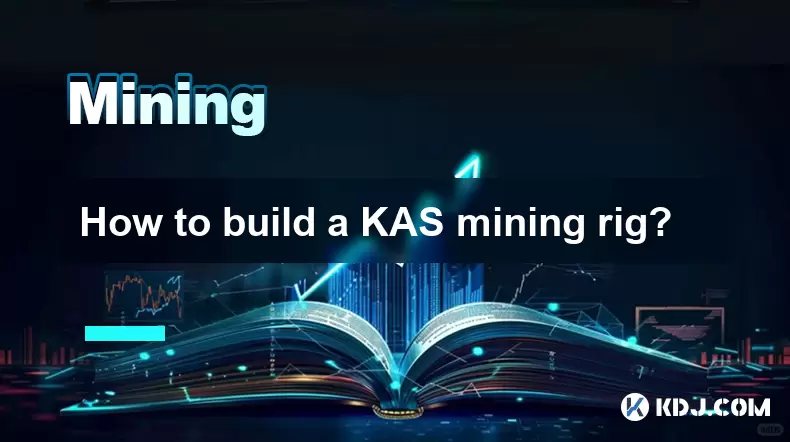
Understanding the KAS Mining Ecosystem
Before assembling a KAS mining rig, it's essential to understand that KAS refers to Kaspa, a decentralized cryptocurrency that utilizes the BlockDAG (Directed Acyclic Graph) structure instead of a traditional blockchain. This allows Kaspa to achieve high transaction throughput and fast block generation—up to one block per second. The mining process for Kaspa relies on the kHeavyHash algorithm, which is a memory-hard variant of SHA-256 designed to resist ASIC centralization and favor GPU-based mining. Ensuring your hardware supports efficient kHeavyHash computation is the foundation of building a successful rig.
Mining Kaspa is not just about hardware; it also involves understanding the network consensus mechanism, wallet integration, and pool participation. Unlike older cryptocurrencies such as Bitcoin, Kaspa’s rapid block times require stable internet connectivity and low-latency hardware responses. This makes GPU selection and system optimization critical components of the build process.
Selecting Compatible Hardware Components
Building a KAS mining rig begins with choosing the right components. The most crucial part is the GPU (Graphics Processing Unit), as Kaspa mining is heavily dependent on GPU performance. Currently, NVIDIA RTX 3060 Ti, 3070, 3080, and 3090 models are widely used due to their optimal balance of hashrate and power efficiency. AMD GPUs such as the RX 6700 XT and 6800 XT are also viable, though they may require additional tuning for optimal performance.
Other essential components include:
- A motherboard that supports multiple GPUs, such as the ASUS B250 Mining Expert or MSI B250 Mining Plus, both of which offer up to 19 PCIe slots.
- A high-efficiency power supply unit (PSU) with at least 80+ Gold certification, capable of delivering 1000W or more depending on the number of GPUs.
- PCIe riser cables (USB 3.0 type) to connect each GPU to the motherboard.
- A reliable CPU, though minimal processing power is required—any modern low-end processor like an Intel Celeron or Pentium suffices.
- 8GB to 16GB of RAM to support the operating system.
- A solid-state drive (SSD) of at least 120GB for the OS and mining software.
Ensure all components are compatible, especially riser cable quality and PSU wattage distribution.
Installing the Operating System and Drivers
The next step is setting up the operating system. Most Kaspa miners use Windows 10/11 or Linux-based mining OSes such as HiveOS or RaveOS for better stability and remote management. For beginners, Windows is recommended due to its user-friendly interface.
To install the OS:
- Create a bootable USB drive using tools like Rufus or BalenaEtcher.
- Insert the USB, boot from it, and follow the installation prompts.
- Once installed, update the system and install the latest NVIDIA or AMD GPU drivers. For NVIDIA, download from the official website; for AMD, use Adrenalin Edition.
After driver installation, verify GPU detection by opening Device Manager or using GPU-Z. Ensure all GPUs are recognized and operating in PCIe x1 mode via the riser cables. If any GPU is not detected, reseat the riser or test with a different cable.
Configuring Kaspa Mining Software
The primary mining software for Kaspa is kGraft, a GPU-optimized miner developed specifically for kHeavyHash. Alternatives include Unmineable and NBMiner, which also support Kaspa mining.
To configure kGraft:
- Download the latest version from the official GitHub repository.
- Extract the ZIP file to a dedicated folder, such as C:\kGraft.
- Open the config.txt file in a text editor.
- Enter your Kaspa wallet address in the wallet field. This is where mined coins will be sent.
- Specify a mining pool. Popular options include k1pool.com, pool.kaspa.pro, and kaspa.farm. Enter the pool address and port (e.g.,
stratum+tcp://k1pool.com:4416). - Assign a worker name (e.g.,
rig1) to identify your rig on the pool dashboard. - Save the configuration and run start.bat to begin mining.
Monitor the console output for hashrate, accepted shares, and connection status. A stable connection should show consistent GH/s output and no network timeouts.
Optimizing GPU Performance and Power Efficiency
To maximize profitability, GPU tuning is necessary. This involves adjusting core clock, memory clock, power limit, and voltage to achieve the best hashrate per watt.
For NVIDIA GPUs using MSI Afterburner:
- Increase memory clock by +800 MHz to +1200 MHz.
- Adjust core clock by +100 MHz to +200 MHz.
- Reduce power limit to 70%–80% to lower energy consumption.
- Enable Custom Voltage Curve if supported.
For AMD GPUs using AMD Software: Adrenalin:
- Switch to Manual Fan Control and set fans to 70%–80% for cooling.
- Use Tuning > Performance Tuning > GPU to unlock voltage and clock adjustments.
- Increase memory timing and voltage carefully to avoid instability.
Test each change incrementally. Run the miner for at least 30 minutes after each adjustment to check for crashes or rejected shares. Use kGraft’s built-in stats or pool dashboard to verify stable performance.
Connecting to a Mining Pool and Monitoring Earnings
Joining a mining pool increases the frequency of rewards by combining computational power with other miners. After configuring your miner with the pool details, visit the pool’s web dashboard and enter your wallet address to view real-time statistics.
Key metrics to monitor:
- Current hashrate (reported in GH/s).
- Accepted/Rejected shares – high rejection rates may indicate network or hardware issues.
- Round duration – shorter rounds mean faster block confirmations.
- Estimated daily earnings in KAS.
Most pools provide API access or email notifications for downtime alerts. Enable these features to maintain continuous operation. Withdrawals are typically automatic once a minimum threshold (e.g., 1 KAS) is reached.
Ensure your Kaspa wallet is secure. Use a non-custodial wallet like Kaspa Wallet (Qt) or Specter Wallet, and back up the seed phrase offline.
Frequently Asked Questions
Can I use integrated graphics to mine Kaspa?
No, integrated graphics lack the computational power required for kHeavyHash mining. Only dedicated GPUs with at least 6GB VRAM are capable of producing a meaningful hashrate.
Is it necessary to use a BIOS-modded GPU for Kaspa mining?
While not mandatory, flashing a GPU with a mining-optimized BIOS can improve stability and memory performance, especially when running multiple cards. However, it carries risks and may void warranties.
How do I check if my rig is mining correctly?
Visit your chosen mining pool’s website, enter your wallet address, and check if your worker appears with an active hashrate. The miner console should also display connected to pool and shares accepted.
What happens if my internet connection drops during mining?
A brief disconnection may cause temporary share rejection. If the outage lasts longer, the rig will stop submitting work. Upon reconnection, the miner will resume automatically, but prolonged downtime reduces earnings.
Disclaimer:info@kdj.com
The information provided is not trading advice. kdj.com does not assume any responsibility for any investments made based on the information provided in this article. Cryptocurrencies are highly volatile and it is highly recommended that you invest with caution after thorough research!
If you believe that the content used on this website infringes your copyright, please contact us immediately (info@kdj.com) and we will delete it promptly.
- Ethereum Whale Activity & Volume Surge: What's the Hype?
- 2025-07-23 20:50:12
- Pepe Dollar, Bitcoin Maxis, Presale Explodes: What's the Hype?
- 2025-07-23 21:10:14
- U Power, EVs, and Web3: Charging into the Future
- 2025-07-23 20:30:13
- Marriage, Divorce, and Prediction: Navigating the Murky Waters of Matrimony
- 2025-07-23 20:55:13
- Ethena's ENA: Fee-Sharing Sparks a DeFi Revolution?
- 2025-07-23 21:15:13
- OKX Delisting & Listing: Navigating Margin Pair Changes in Crypto
- 2025-07-23 20:30:13
Related knowledge
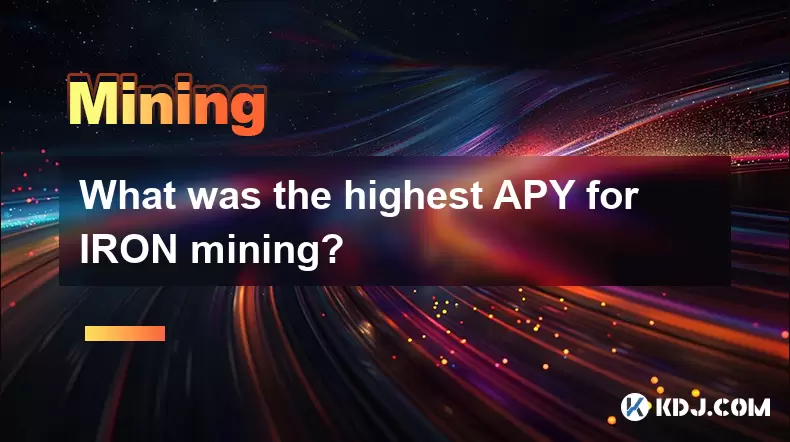
What was the highest APY for IRON mining?
Jul 23,2025 at 05:14am
Understanding IRON Token and Its Mining MechanismThe IRON token is a stablecoin that operates within the Iron Finance ecosystem, primarily on blockcha...

What is impermanent loss in IRON pools?
Jul 23,2025 at 09:00am
Understanding Impermanent Loss in the Context of IRON PoolsImpermanent loss is a phenomenon that affects liquidity providers in decentralized finance ...
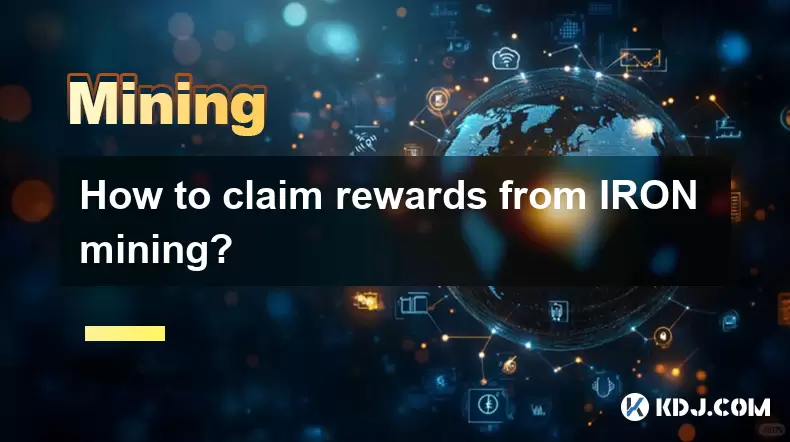
How to claim rewards from IRON mining?
Jul 23,2025 at 02:21pm
Understanding IRON Mining and Reward MechanismsIRON Finance operated as a decentralized finance (DeFi) protocol on the Polygon and Binance Smart Chain...
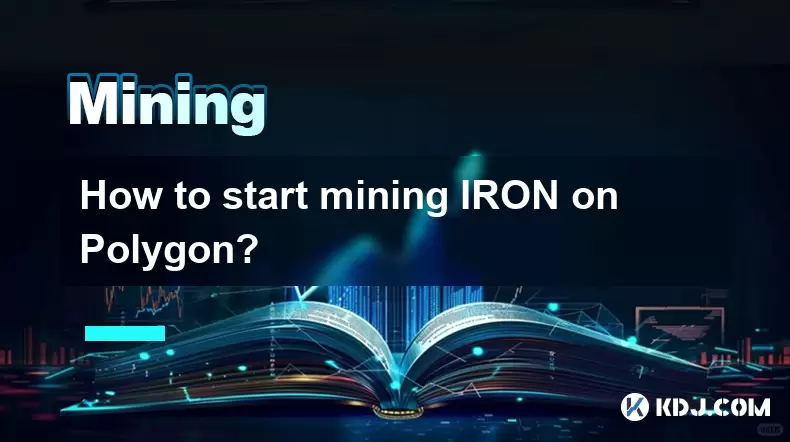
How to start mining IRON on Polygon?
Jul 23,2025 at 08:00pm
Understanding IRON and Its Role on PolygonIRON is a decentralized, algorithmic stablecoin designed to maintain a 1:1 peg with the US dollar. It operat...
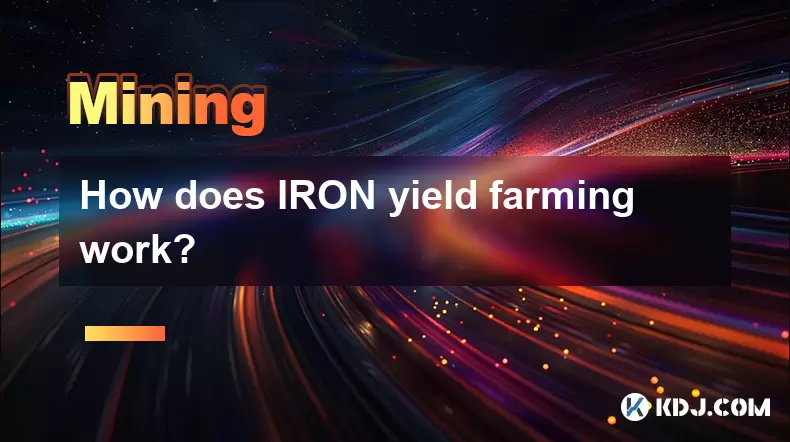
How does IRON yield farming work?
Jul 23,2025 at 10:14pm
Understanding IRON Yield Farming and Its Core MechanismIRON yield farming is a decentralized finance (DeFi) strategy that allows users to earn rewards...
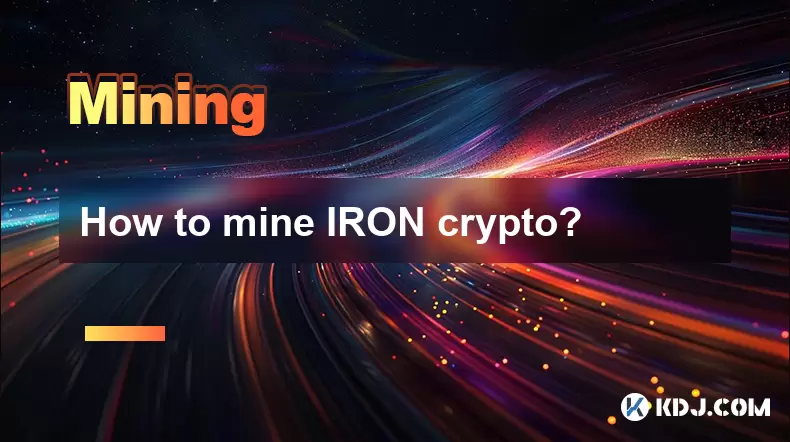
How to mine IRON crypto?
Jul 23,2025 at 07:08pm
Understanding IRON Crypto and Its Mining MechanismIRON crypto is not a standalone blockchain-based cryptocurrency that can be mined using traditional ...

What was the highest APY for IRON mining?
Jul 23,2025 at 05:14am
Understanding IRON Token and Its Mining MechanismThe IRON token is a stablecoin that operates within the Iron Finance ecosystem, primarily on blockcha...

What is impermanent loss in IRON pools?
Jul 23,2025 at 09:00am
Understanding Impermanent Loss in the Context of IRON PoolsImpermanent loss is a phenomenon that affects liquidity providers in decentralized finance ...

How to claim rewards from IRON mining?
Jul 23,2025 at 02:21pm
Understanding IRON Mining and Reward MechanismsIRON Finance operated as a decentralized finance (DeFi) protocol on the Polygon and Binance Smart Chain...

How to start mining IRON on Polygon?
Jul 23,2025 at 08:00pm
Understanding IRON and Its Role on PolygonIRON is a decentralized, algorithmic stablecoin designed to maintain a 1:1 peg with the US dollar. It operat...

How does IRON yield farming work?
Jul 23,2025 at 10:14pm
Understanding IRON Yield Farming and Its Core MechanismIRON yield farming is a decentralized finance (DeFi) strategy that allows users to earn rewards...

How to mine IRON crypto?
Jul 23,2025 at 07:08pm
Understanding IRON Crypto and Its Mining MechanismIRON crypto is not a standalone blockchain-based cryptocurrency that can be mined using traditional ...
See all articles

























































































